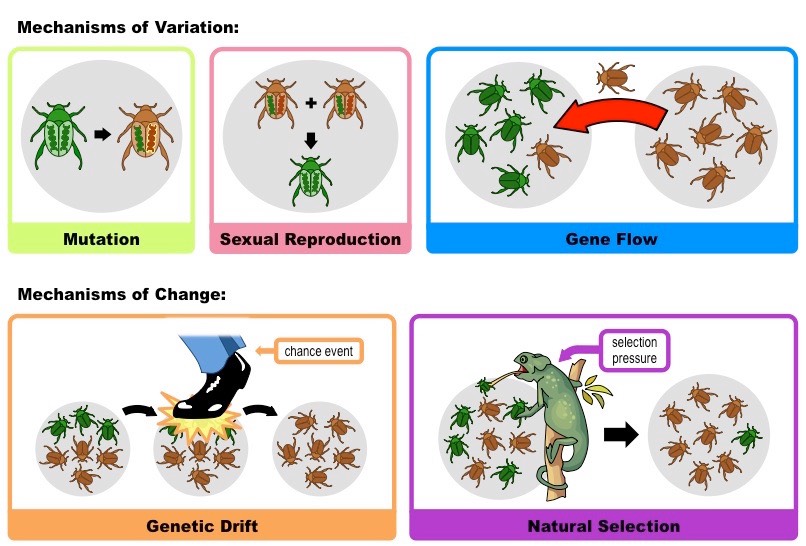Evolution describes the cumulative changes that occur in the heritable characteristics of a population
- It can result in diversification within a species (microevolution) or diversification between species (macroevolution)
Microevolution
Microevolution describes evolutionary changes that occur within a short period of geological time (e.g. between generations)
There are three main processes that promote variation within a population (biodiversity):
- Gene mutations: A change the genetic composition of an organism due to alterations in the DNA base sequence
- Sexual reproduction: Introduces new gene combinations in offspring via random mating and meiotic divisions
- Gene flow: The movement of alleles into (or out of) a population as a result of immigration or emigration
Variation within a gene pool can be reduced if conditions promote the survival of certain traits and the removal of others
There are two main mechanisms for change which will reduce biodiversity within a population:
- Genetic drift: The change in the composition of a gene pool as a result of a random or chance event
- Natural selection: The change in the composition of a gene pool as a result of differentially selective environmental pressures
Additionally, humans may change the composition of gene pools by directly intervening in breeding processes (artificial selection)
Species Diversification and Microevolution

Macroevolution
Macroevolution describes evolutionary changes that occur over relatively long geological periods, resulting in speciation
- Macroevolution involves changes in large populations and often is associated with significant environmental change
- Not all populations undergo constant evolutionary modifications, some remain relatively unchanged (stasis)
- When evolutionary changes prevent two related populations from interbreeding, then speciation has occurred
